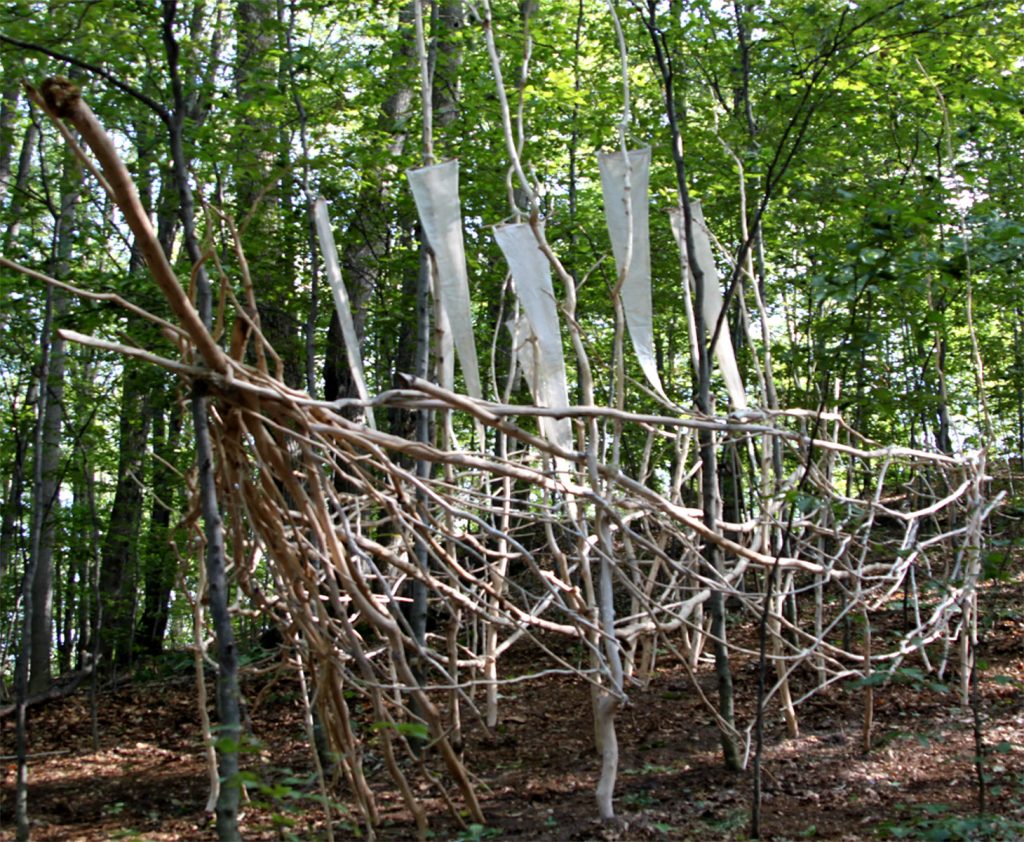
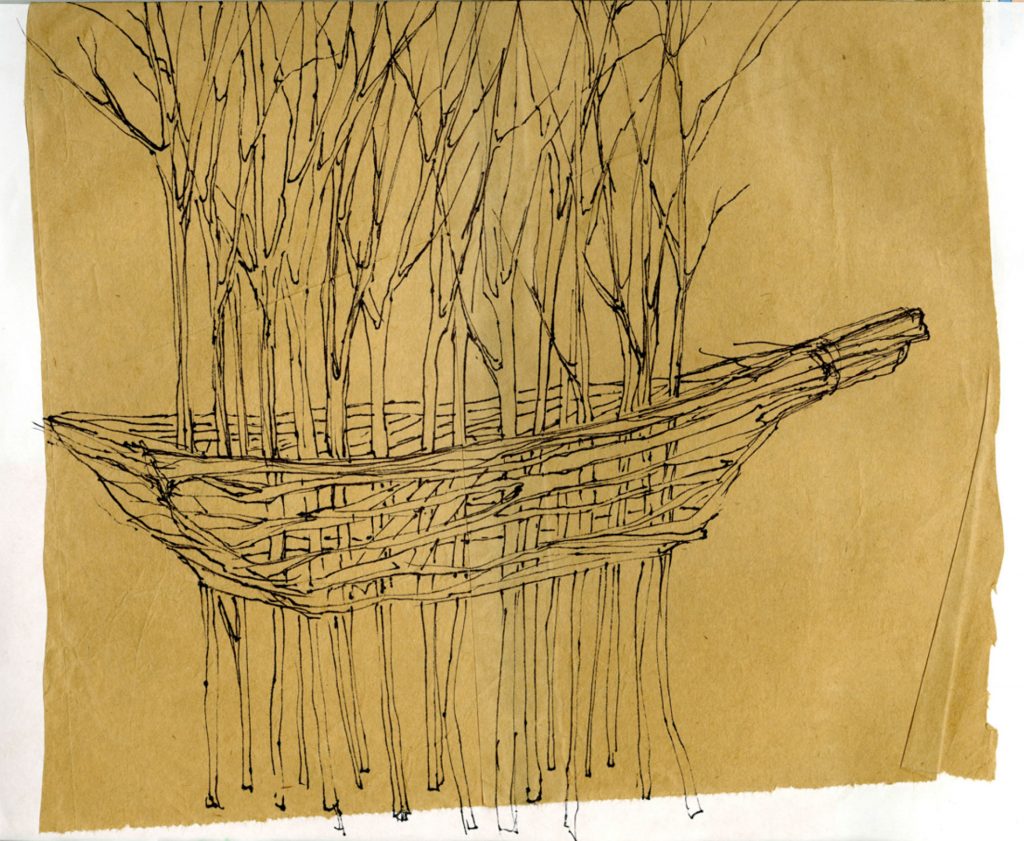
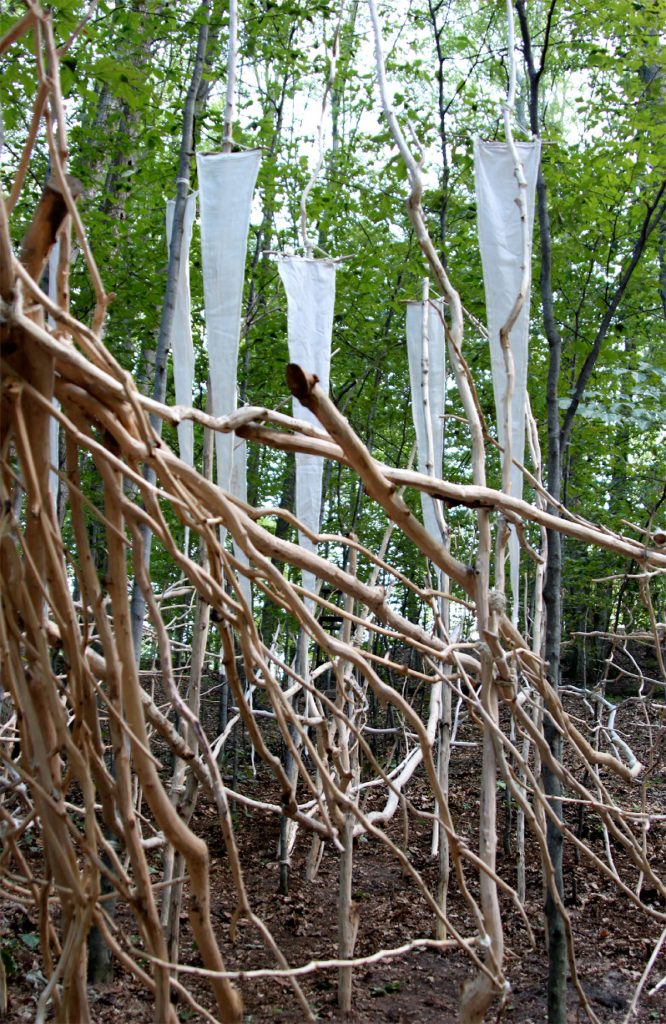
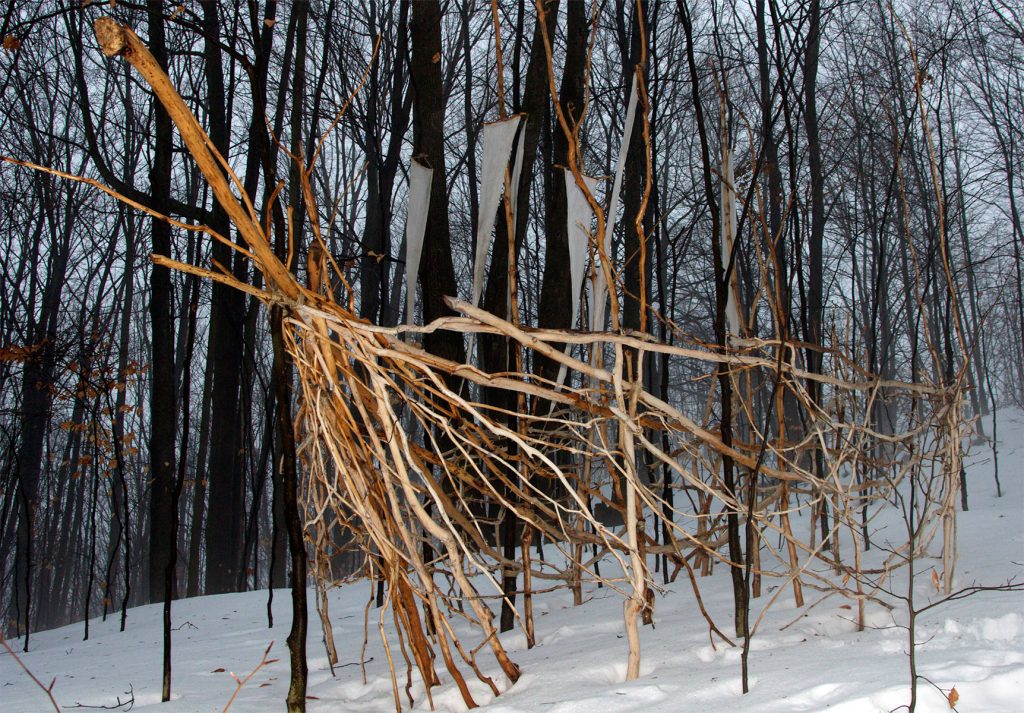
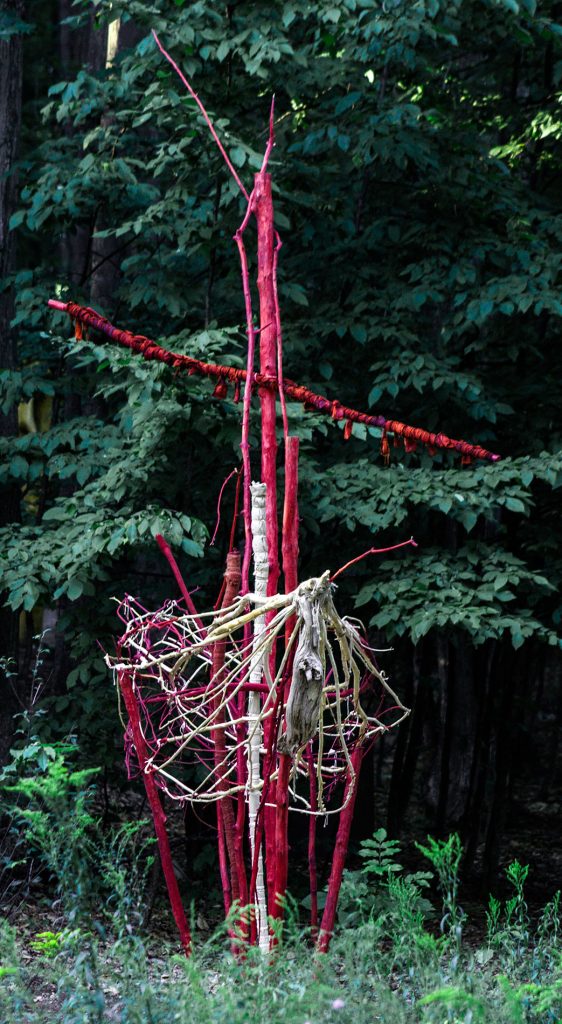
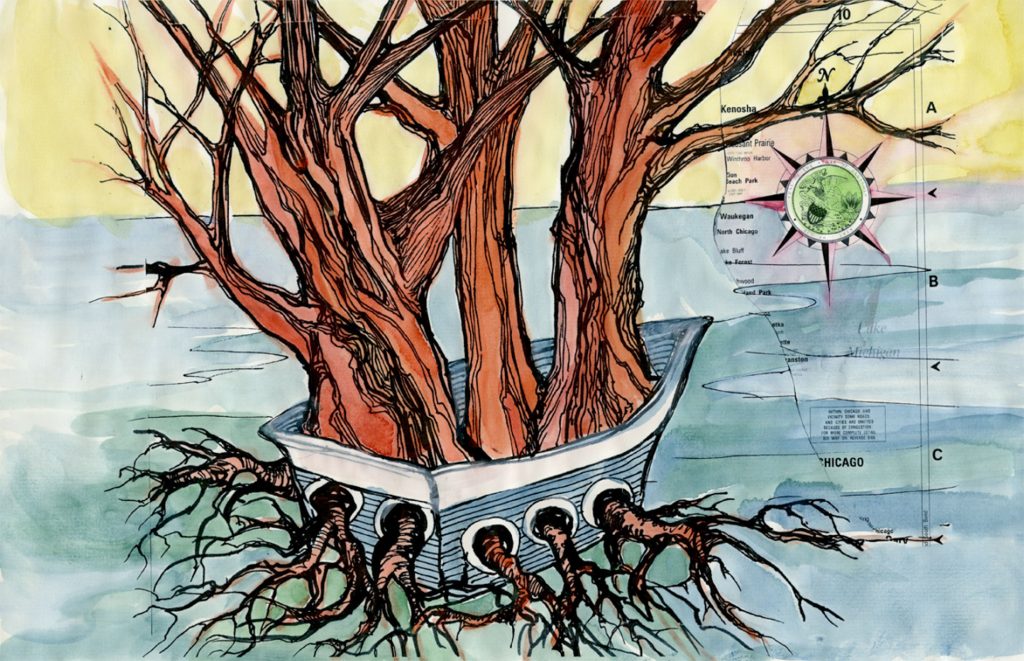
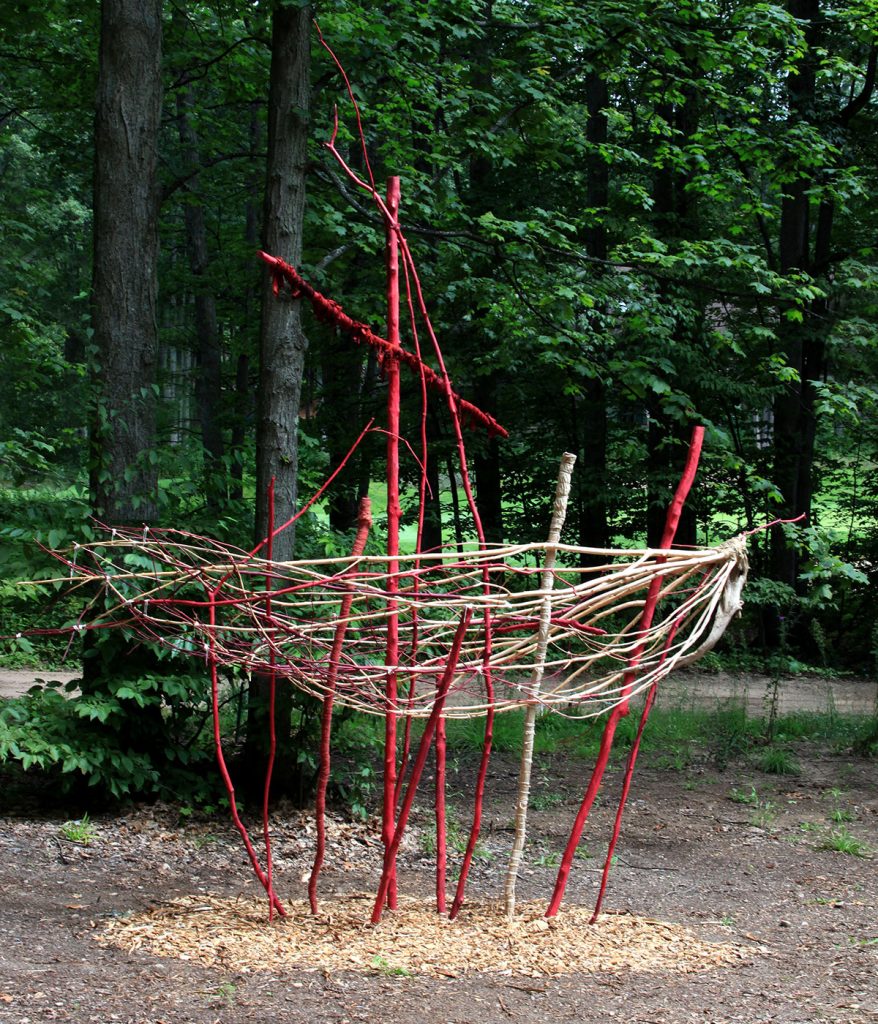
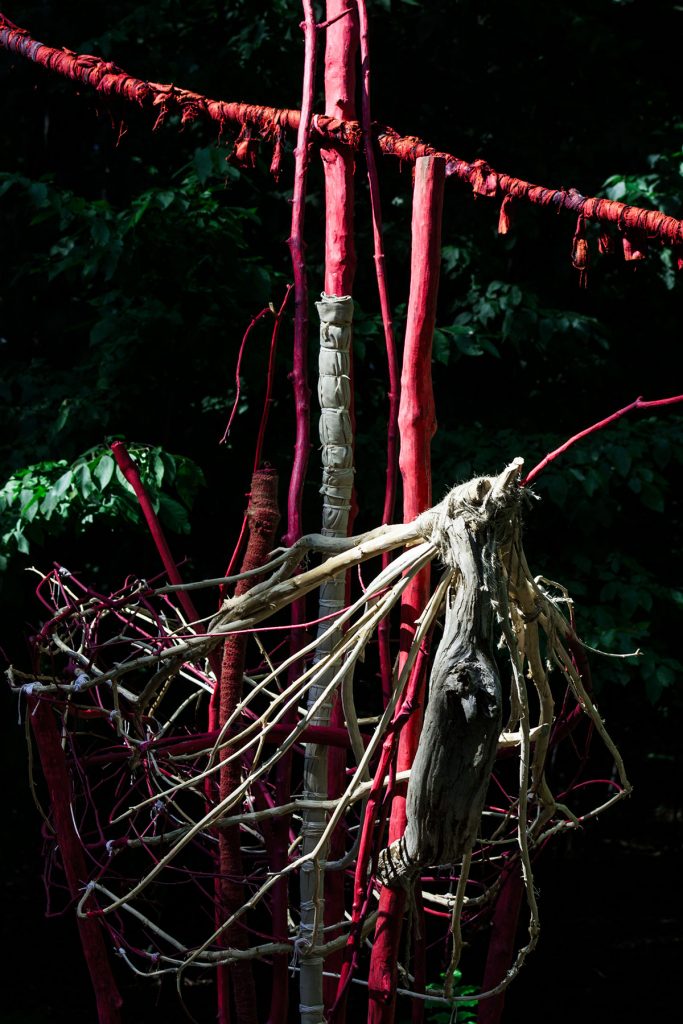
BOAT SERIES: MICHIGAN LEGACY ART PARK
“The Water Brought the Trees” was a site-specific project for Michigan Legacy Art Park in Thompsonville, Michigan and was about the journey and migrations of nature and how we try to understand them. The work was inspired by the story of the mother bear and her two cubs from the Sleeping Bear Dunes legend. The symbol of a boat giving passage to trees with the aid of the water and the air currents is an amiable and romantic myth in my mind. This temporal piece was a reinterpretation of water and air shaping land. and the bared trunks and roots in the boat were eroded of land and appear to be free to travel. The trunks and branches of the trees are like masts that aided in propelling of the vessel through the past to something new. In contemplation, viewers could consider some of their own narratives about the journey. MLAP founder David Barr had commented the he appreciated the work’s ephemeral and phantom-like presence.
The project involved using naturally felled branches and broken young trees that have been cleared and discarded. For each branch, I shaved off areas of the old bark and exposed the smooth wood underneath. The installation was shaped into a boat-like sculpture with branches protruding through the structure so it appeared to hover above the ground at eye level. I used simple building materials and methods to put the work together such as latching with wire and then covering the heavy wire with natural fiber rope. The size of the first installation was 20 feet in height and 15 feet at the girth. I enjoy the more fluid methods in this kind of sculptural approach because it allows me to handle a pliable volume, line and plane. The overall intention of this project is to create a number of these boats in varied locations around the world that are striving to marry art in the environment and national resources conservation and education.
“Shades of Some Distant Journey (Boat Series)” is a reflection of the previous boat piece created for Michigan Legacy Art Park. When I set about making this new ship form, I began to understand that it reflected the memory or “ghost” of my past work. I have a book I carry around with me from place to place titled Ghost of the Great Lakes by Dwight Boyer. In the forward he includes a poem by Lyle A. Meyers Sr., that I like to read about lost boats of the Great Lakes called Phantom Ships that Pass in the Night. The imagery of this poem helped me to visualize this work as a symbol of passing and memories relived. I assembled this temporal construction using what was readily available; fallen trees and even elements of past installations. The decision to paint the work was rooted in my desire to bring the lines away from the surroundings in the different seasons and at different times of the day. My vision was to see the lines in the ambiguous surroundings of the moonlight, the fog, and the winter, as well as being complemented by the foliage during the bright sunlight in the summer and fall months.
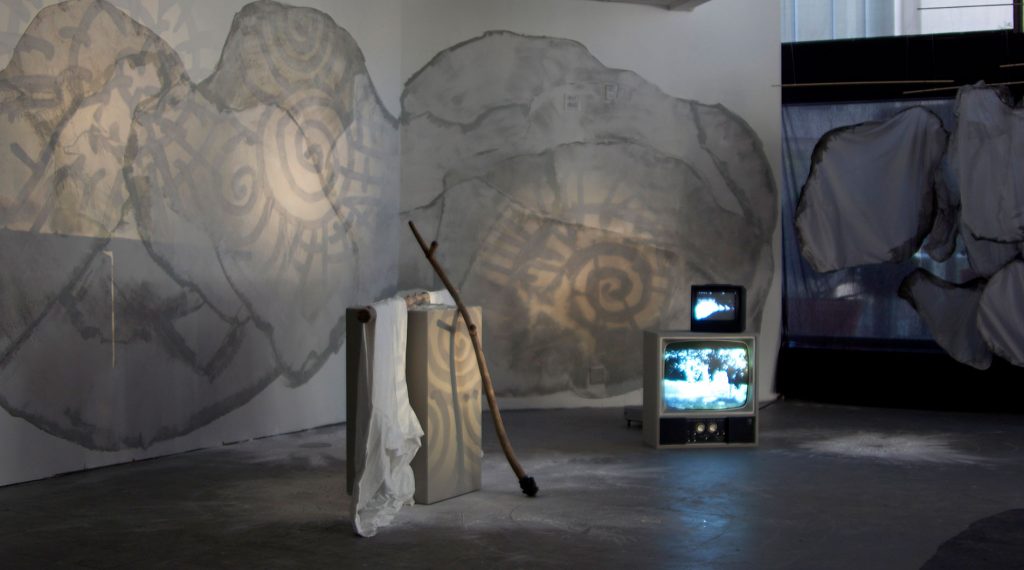
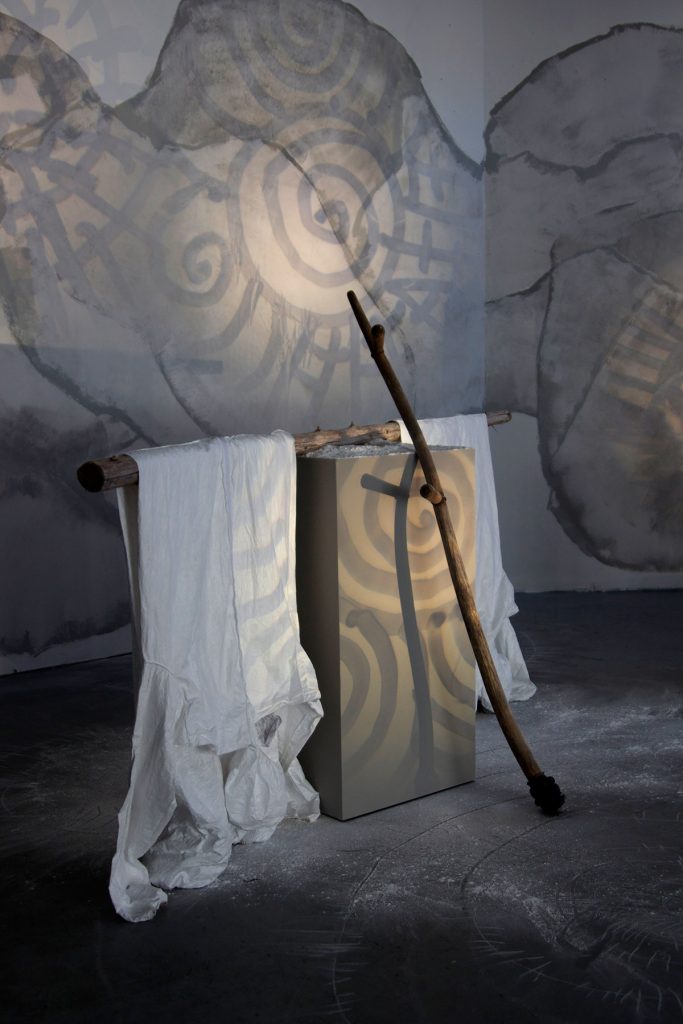
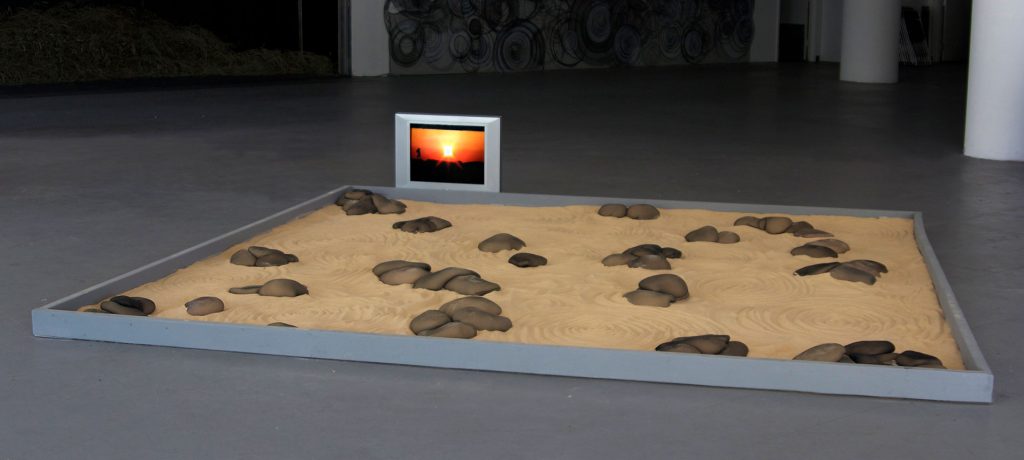
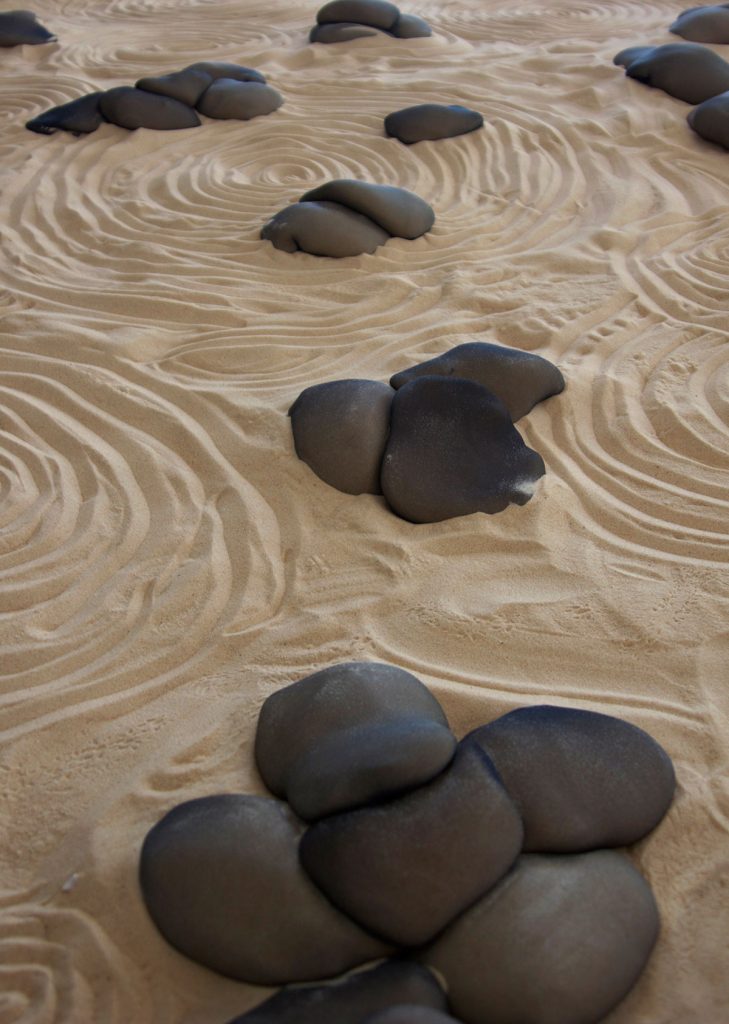
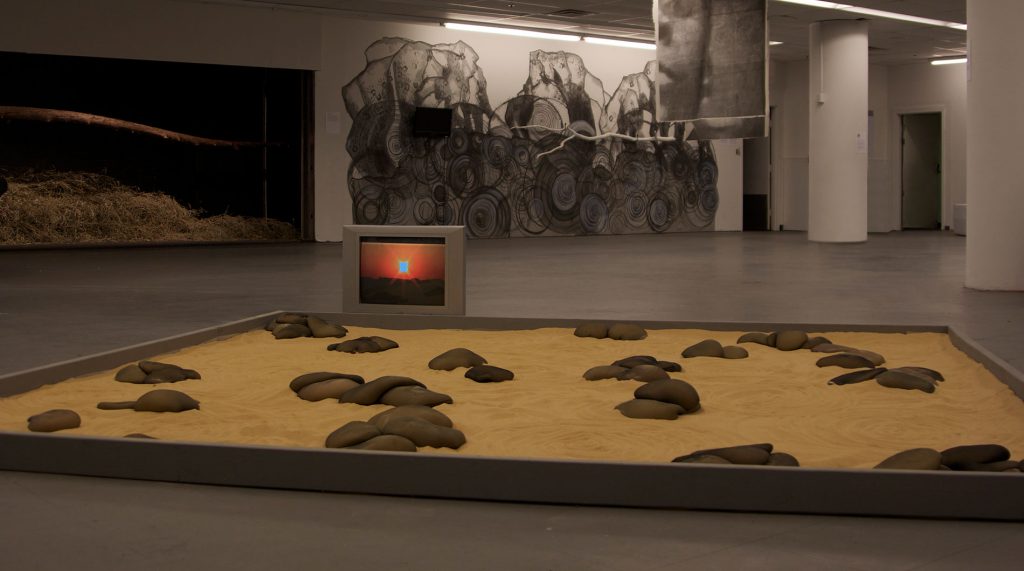
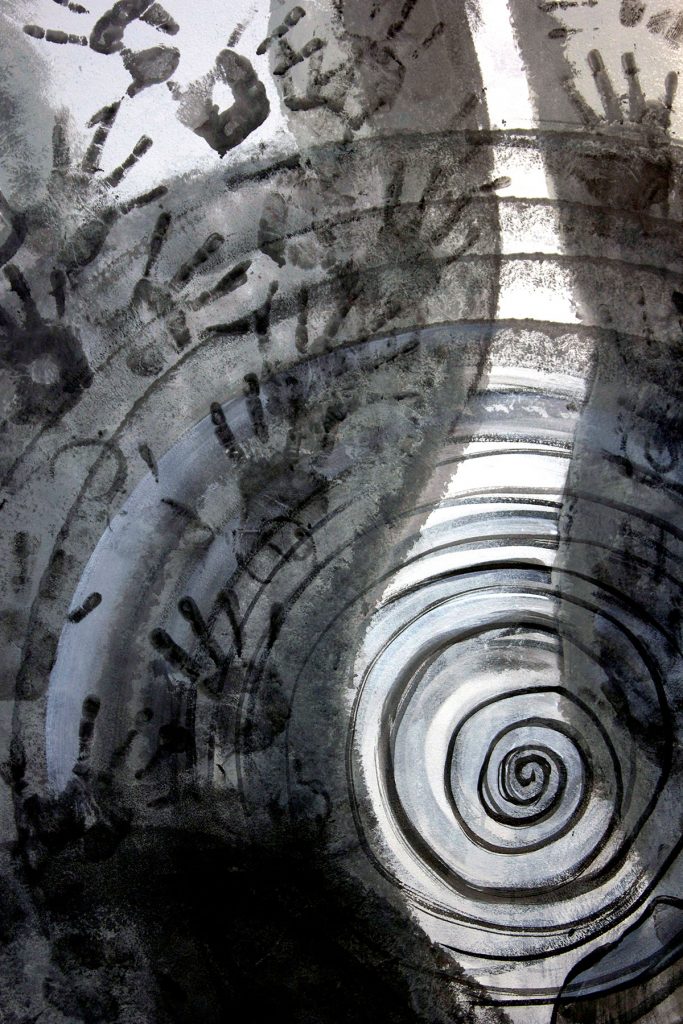
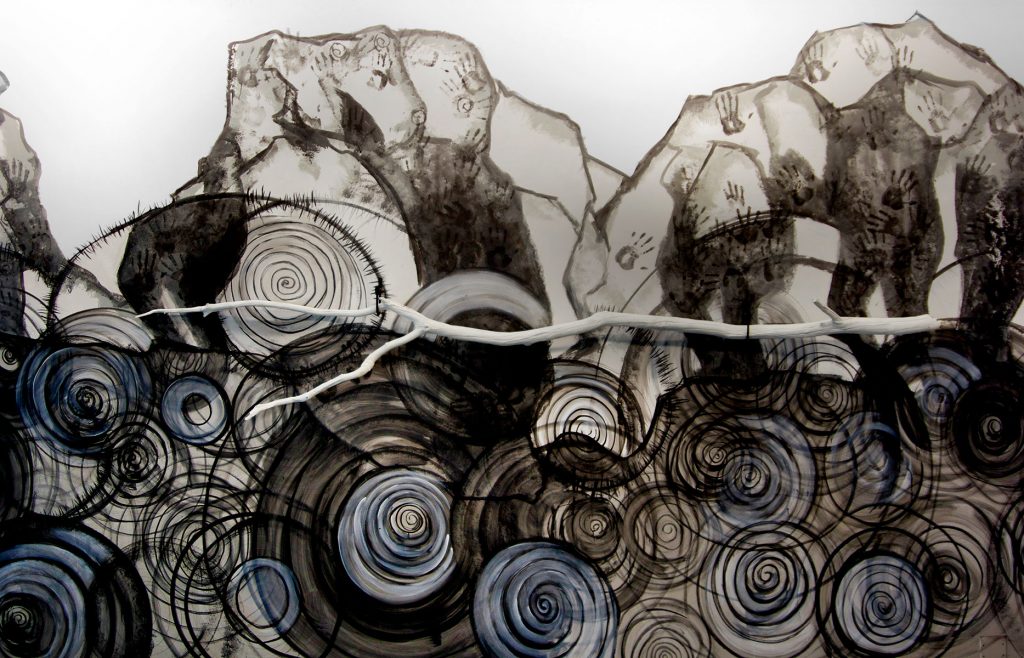
STICKS AND STONES: A BLUE SKY PROJECT COLLABORATION
This collaborative project was designed as a celebration of the Blue Sky Project and the creative work of Pamela Ayres and Kaz McCue. The focus of this project was a creative “exchange” which pushed the collaboration of the artists and youth involved outside of the walls of the studio and into a direct interaction with the environment. In its entirety, the project served to provide an opportunity for Blue Sky Project youth participants from past years an opportunity to go to a rustic setting and to explore and experience an environment very different from the urban environment of Dayton. Then, to provide a contrasting experience when the collaboration returned to Dayton, providing the young people with a unique experience. The project also provided a unique collaborative creative experience for Ayres and McCue as well as fostering expanded partnerships for Blue Sky Project.
The title “Sticks and Stones” refers to the two proposed environments within which the collaboration will take place. The idea of “sticks” relates directly to the woods of northern lower Michigan and “stones” refers to the city of Dayton, Ohio. Since the Blue Sky Project currently takes place in Dayton, the idea is to give the collaborators a chance to experience an environment that is vastly different from the one with which they are most familiar. The first phase of the exchange involved bringing a group of youth participants from past years to the Sleeping Bear Dunes area of Michigan for one week to work with Kaz McCue. Through their creative research about the area, the group developed the theme of migration and displacement and delved deep into these subjects as a reflection of their experiences. During that time, the group experienced the area and developed a collaboration that took place at Michigan Legacy Art Park in Thompsonville, Michigan. This environmental immersion gave the group a chance to really feel the natural environment in an effort to stimulate the creative interaction and collaboration. The second phase of the exchange took place in Dayton, Ohio for one week to work with Pamela Ayres. Again, the purpose is to immerse the group in the environment of this urban setting in order to inspire and inform the group’s work together. While in Michigan, McCue acted as the research lead for the youth participants while the kids served as a resource for Ayres in Dayton.
During the course of this project, there were two opportunities for presentation. The first took place at Michigan Legacy Art Park in the form of a site-specific installation. While in northern Michigan, the group also created a series of videos and artifacts that could be taken back to Dayton. The second presentation involved a series of installations, created in collaboration between the two artists and inspired by the work the two did with the youth participants in each location.
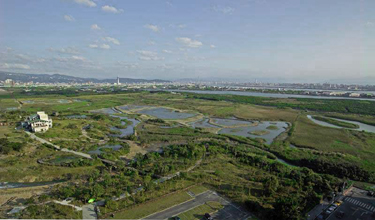
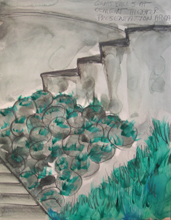
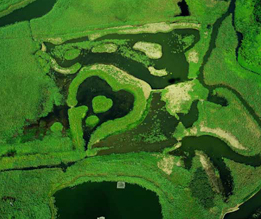
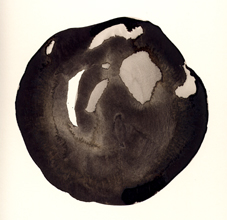
GUANDU NATURE PARK PRESENTS INTERNATIONAL OUTDOOR SCULPTURE FESTIVAL Guandu Nature Park located in Taipei County will present its first International Outdoor Sculpture Festival opening in May 2006. Six international artists will come to Taiwan and create site specific sculpture installations using natural materials and focused on the theme of nature and the environment. The Sculpture Festival is being organized by Guandu Nature Park to coincide with their annual International Bird Watching Festival. The Sculpture Festival will include public activities and workshops by some of the invited artists. Each artist will have a volunteer host for their 7-10 day stay in Taiwan, and volunteer helpers will assist the artists in making their works. The curator for the Festival is American artist Jane Ingram Allen, now living in Taiwan after completing her “Made in Taiwan” project with an 18 month Fulbright Foundation grant sponsored by the Council for Cultural Affairs and Taiwan’s National Endowment for Culture and Art in 2004-05. For the Guandu International Outdoor Sculpture Festival Allen will be creating a sculpture installation titled “Nests for Humans.” The giant nest forms will be large enough for people to go inside and based on real bird nests collected at Guandu Nature Park. Allen will use fallen branches and dried grasses to construct the nests and cover the forms with handmade paper made from local plants. The public will be invited to join in making handmade paper feathers to line the nests. Visitors to the Park can go inside the nests and write some of their own words on the handmade paper feathers. People will be encouraged to express their thoughts about man’s relationship to nature and the birds that use Guandu Nature Park as a home or place to rest during their annual migrations. Allen has invited 5 other artists to join with her in creating outdoor sculpture works at Guandu Nature Park for the Festival. The artists include: Pamela. G. Ayres of the USA, Josho of the USA, Rikuo Ueda of Japan, Ieda Oliviera of Brazil and Wen Fu Yu of Taiwan. Artist Wen-Fu Yu, born in Yunlin County and now living in Nantou County, is known for his large scale installations using duck feathers. Yu recently had a one-person exhibition at the Taipei Fine Arts Museum where his installation titled “The Air” filled the room with a giant cascade of white feathers suspended from the ceiling. At Guandu Nature Park Yu will create a sculpture in the form of a flower around a pond with thousands of duck feathers. Yu has created other installations in Taiwan and also in the USA where he has been an artist in residence at Headlands Center for the Arts in California and at the International Studio & Curatorial Program (ISCP) in New York. American artist Pamela G. Ayres is coming to Taiwan to create a sculpture installation of many “Grass Balls” using nylon net bags filled with soil and grass seeds to grow over time. Ayres’s installation titled “Growing Grass” will encourage people to watch the work of nature and the process of growth. She will work with Park naturalists to find seeds for a grass species that is native to Taiwan and that will be good for the environment at Guandu. Ayres is gallery director and professor of art at Bradley University in Peoria, Illinois, and she has done similar grass ball installations at art museums and public spaces in the USA. This will be her first visit to Asia. Josho of the USA has been an artist in residence for several environmental organizations and is currently working at the Occidental Arts and Ecology Center in California. He will be coming to Taiwan for the first time direct from a project in India. Josho is very interested in community art projects that involve people in working together to make sculpture installations that focus on land use and environmental issues. At Guandu he will make a sculpture using local branches and reeds and other grasses that will function as a bird blind and provide bird habitat perches to encourage people to become more aware of birds and the necessity to protect and preserve bird habitats such as Guandu Nature Park. Rikuo Ieda of Osaka, Japan, will create an installation titled “Mind of Wind” that will be in the form of a small building or “wind café” made of discarded wood and found debris. Inside the small building will be a wind machine ingenuously constructed from a tree branch and using the power of the wind to make brush drawings on paper. People can sit and have some tea inside the “wind café” while they wait for the wind to make a drawing for them to take home. His installation will encourage people to become aware of the wind and other often unnoticed elements of nature. Ueda has been doing similar wind machine installations at many places in Europe and Japan, but this will be his first installation in Taiwan. Ieda Oliveira of Salvador, Bahia, in Northeastern Brazil will return to Taiwan after spending one month here in August 2005 as an artist in residence at Taipei Artists Village. Oliveira has created many large scale art installations in her native Brazil and most recently at the 26th Sao Paulo Biennale. She has also worked as an artist in residence in Germany .Oliveira likes to use everyday found materials and plans to incorporate some of her own Brazilian culture into her work at Guandu as well as the culture of Taiwan. She will use hundreds of bamboo street brooms from Taipei to create a passageway across the marsh at Guandu Nature Park. The Sculpture Festival artworks will remain on view at Guandu Nature Park through April 30, 2007. Public tours and participatory activities and workshops are being planned for the opening weekend and during the 6 months of the exhibition. |

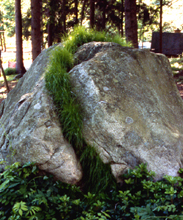
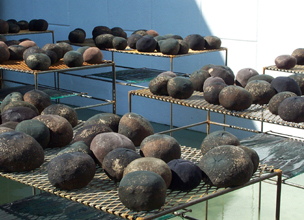
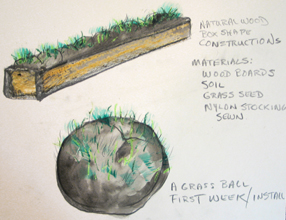
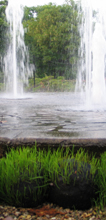
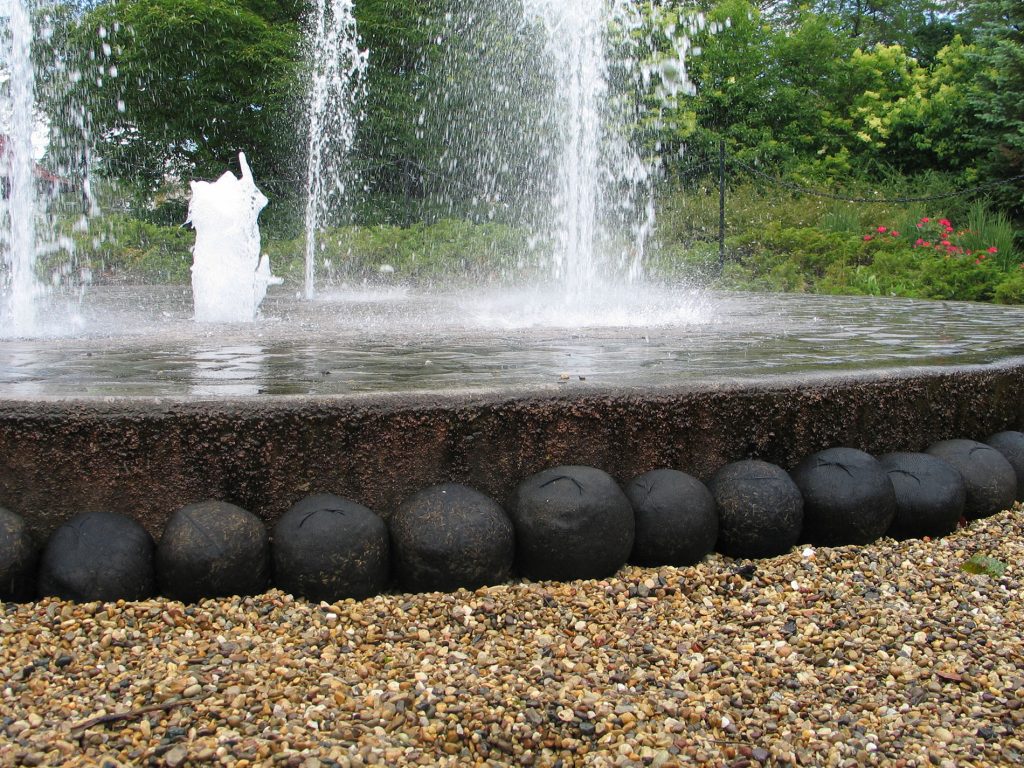
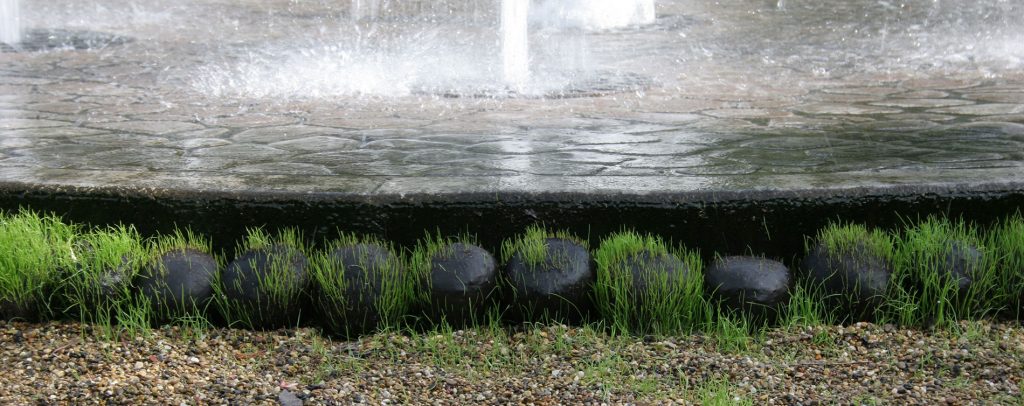

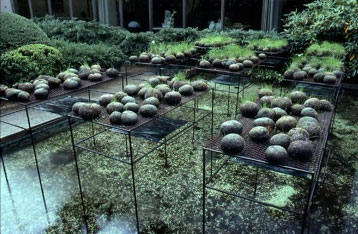
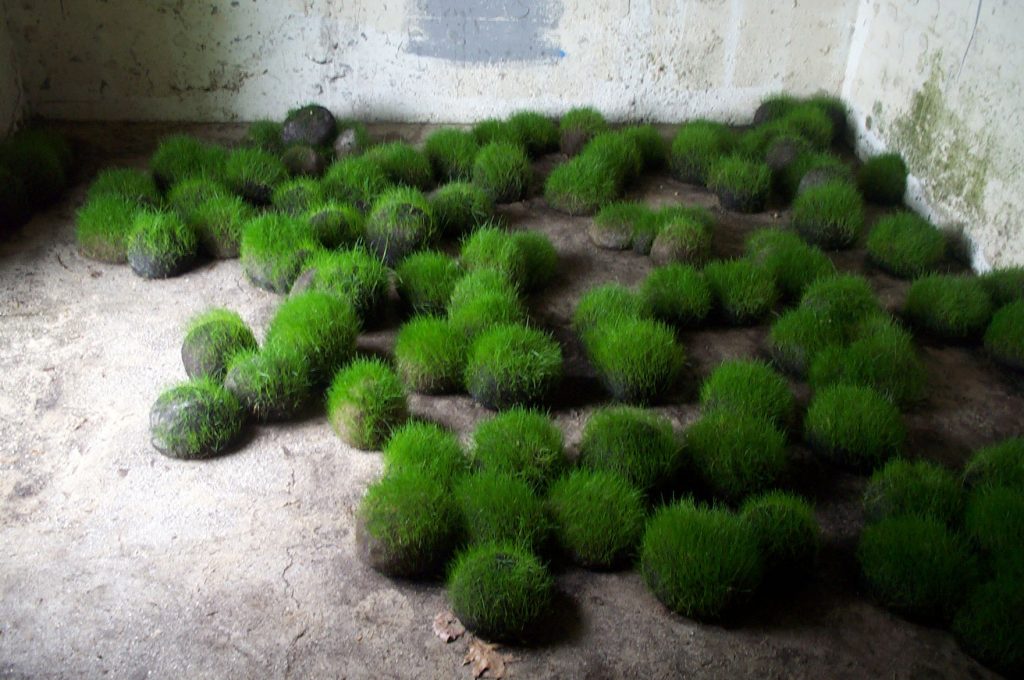

INSTALLATION AND THE ENVIRONMENT: INTERLOCHEN CENTER FOR THE ARTS, LUTHY BOTANICAL GARDENS, GUANDU NATURE PARK, WINTER GARDEN AT PPG PLAZA, ADELPHI UNIVERSITY, STAMFORD MUSEUM AND NATURE CONSERVANCY SCULPTURE GARDEN The exploration of natural materials is affected by seasonal and regional conditions. When I am in the outdoors I gather seeds, shells, rocks, dirt, sand, snow or water. I make and arrange ball-shaped elements that naturally evolve into an altered arrangement. Often the transformed physical makeup of the installations is realized in the passage of time. In addition to the effects of weather and time, in relationship to the work, has an affect on the viewer. The dirt balls grow grass, the sand balls blow away in the wind and dissolve in the surf, and the snow and ice balls melt into puddles. Interpreting the ball objects into selected environments enables me to incorporate the rhythm and systems of nature into the works while gently conveying aspirations of some formal elements of design. The varied societies of human beings on the earth impact the natural environment continuously. The installations I create impact a place much in the same way that someone plants a garden to enhance a neighborhood, backyard or town green. Because of the scale and accessibility of the works all of these elements seem uncomplicated and lend an invitation to everyone to approach. I observe that people relate to the scale of the balls readily and are willing to be in the locality of the site and participate in the role of witness throughout the life of the work. |
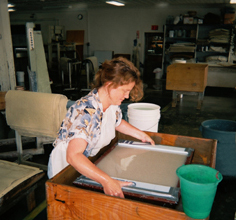
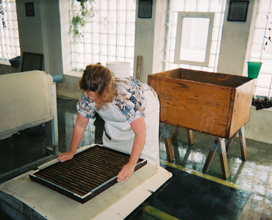
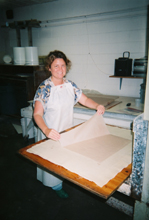
VISITING ARTIST: TWINROCKER HANDMADE PAPER, 2004 This project, entitled “Stitching and Sewing These Things That Grow,” is a visual investigation of the presentation of natural elements from the Indiana landscape into installations and formal art spaces. The project involves the creation of a series of sculptures constructed with sewn handmade paper, linen and wood elements produced for the purpose of exhibition. The sculptures are made from simple fabrics, hand carved wood, steel and a variety of custom hand pulled papers from the Twinrocker Handmade Paper in Brookston, IN. This series incorporates paper made with fibers of plants indigenous to Indiana from both the wild and the agricultural landscapes. The project is designed to develop my understanding of were I now live and allows me to investigate this region of the country and its ecological distinctions. These works will be an evolution of things that reflect my changing attitude towards this country’s many historical circumstances and our use of varied resources. * Support provided, in part, by the Indiana Arts Commission, Bradley University and Twinrocker Handmade Paper. |
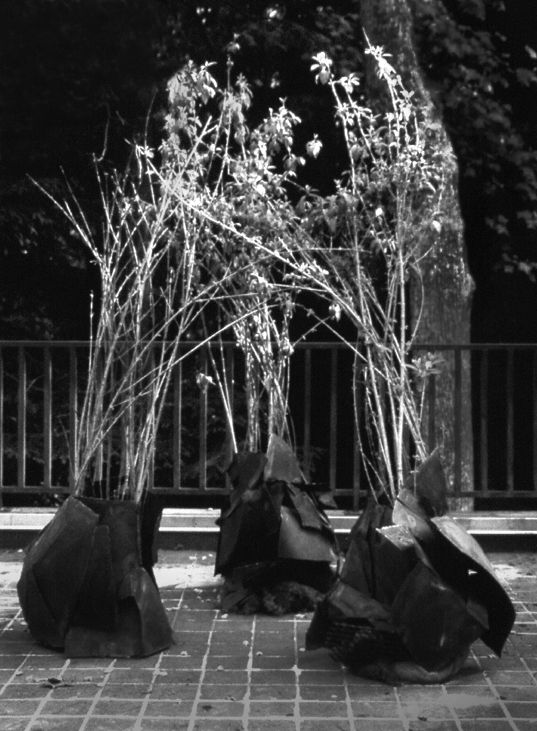
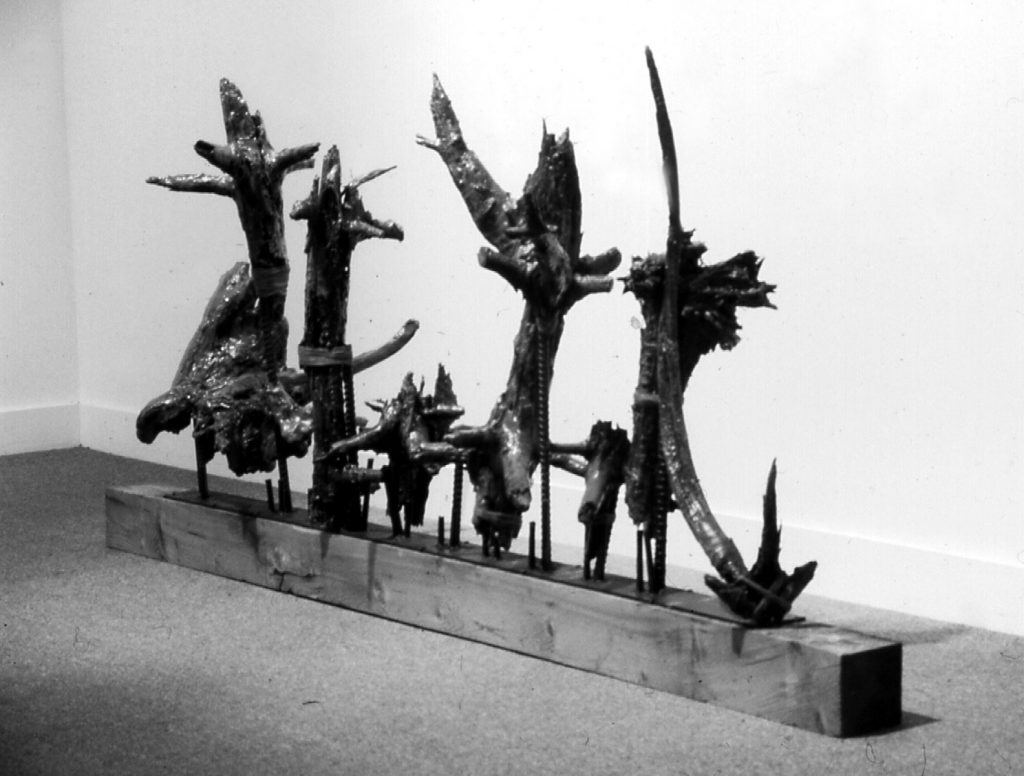
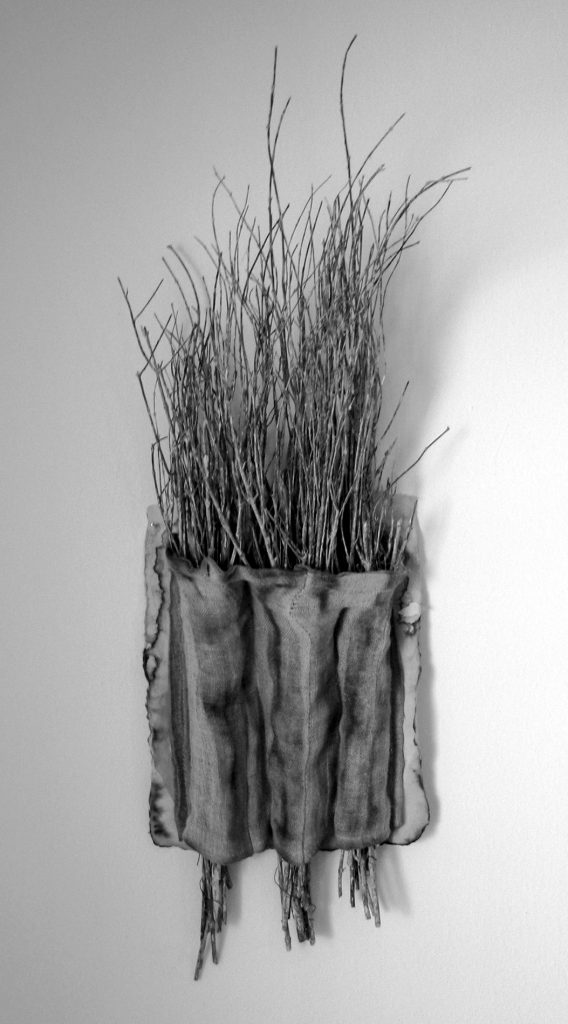
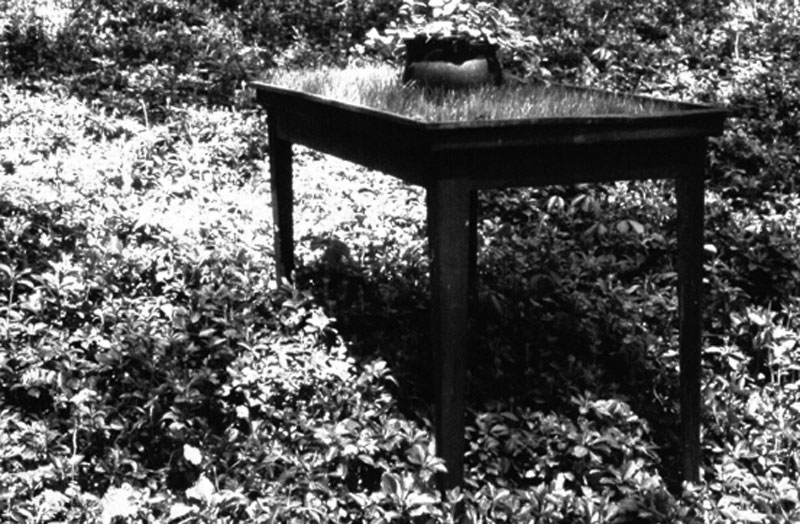
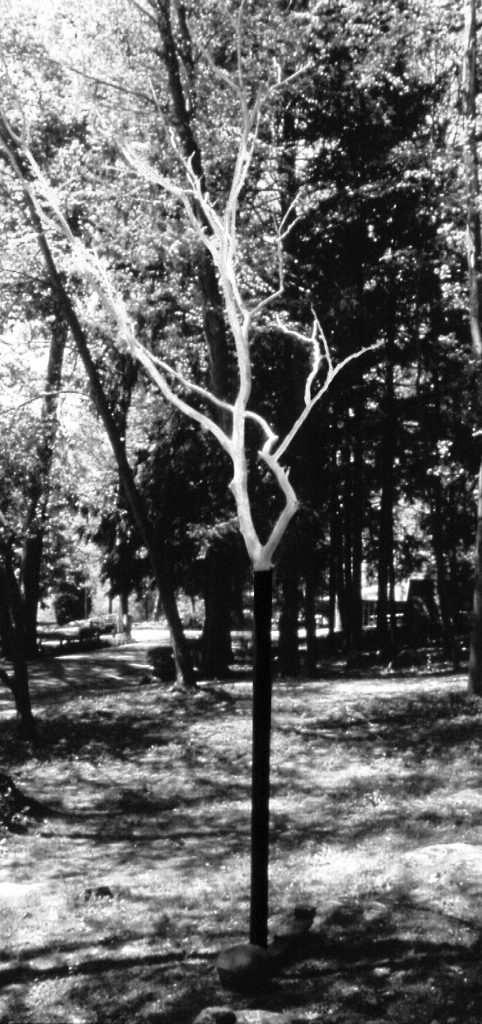
WEIR FARM TRUST ARTIST-IN-RESIDENCE / VISITING ARTISTS PROGRAM, 1999 Drawing inspiration from its magical landscape, artists have lived and worked at Weir Farm for 118 years. The preservation of an extraordinary facet of America’s artistic heritage underlies the significance of Weir Farm. Equally important, is the preservation of an environment where contemporary artists can thrive. This environment includes not only the physical landscape, but also an atmosphere in which the creative spirit is both fostered and nurtured. Providing outstanding opportunities for promising artists within the context of this environment is a mandate of the Weir Farm Trust and is critical to the success of the long-range management plan of the Farm. The cornerstone of the Trust’s programs and central to its mission is the Visual Artists Program which includes resident and visiting artists. Residencies in the newly developed Artist-In-Residence program last two weeks to a month. Artists eventually live in the Burlingham House, which currently serves as the Visitor Center, and work in studios to be constructed on the footprint of a former building. In the meantime, living and work space is located in excellent facilities within a short walk from the Farm. The Visiting Artists Program, originally envisioned as the first step towards the development of the residency program, uses Weir Farm as an “open air” studio. This program encourages artists to create a cohesive body of work based on their own personal experiences or interpretation of the landscape. Artists are selected through a competitive panel process to spend a period of time, up to a year, working at the Farm. Artists chosen for participation in the Visiting Artists Program have reached a level of maturity in their work and have thoughtfully considered why they would like to work at the Farm. Since its beginning in 1991, the program has attracted Guggenheim, Fulbright, National Endowment of the Arts Fellows and Connecticut Commission on the Arts grant recipients, as well as winners of other national and international residency and fellowship awards. Artists apply to the program in all visual art forms. We are pleased with this year’s outstanding artists Pamela Ayres, Nancy Buck, Bob Chaplin, John Gruen, John Mulcahy and Betty Tompkins. We again extend our deepest thanks to The Stamford Museum and Nature Center and to Ken Marchione, Director of Art, for making this exhibition possible. Alden Weir had a lifelong commitment to nurturing other artists. His spirit is alive and well at the Farm, due in great part to the artists who come to immerse themselves in their work, having been captured by the landscape that continues to inspire. Constance Evans, Executive Director |